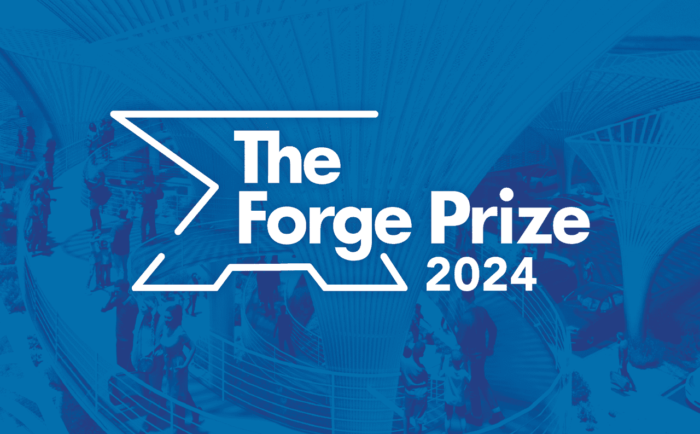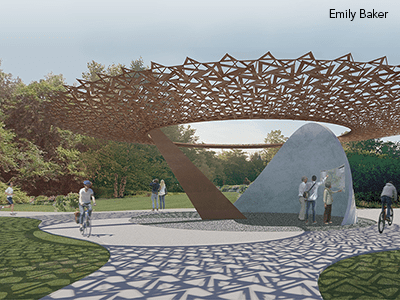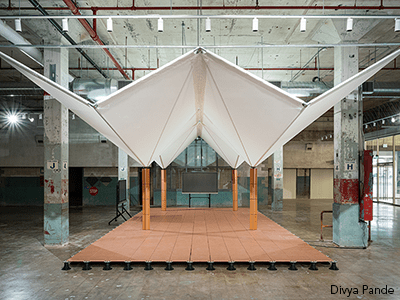Three Inspiring Visions Compete as 2024 Forge Prize Finalists

CHICAGO – A stunning steel space frame to kickstart a day of adventure. A series of glass boxes that seem to hang in the sky while uniting a community. A sustainable shade system that uses steel tubes for water capture.
These three projects are finalists for the American Institute of Steel Construction’s 2024 Forge Prize. One of these projects will win $10,000 in a YouTube stream at 1:00 p.m. Central on March 5. But which one?
The Forge Prize, established by The American Institute of Steel Construction in 2018, recognizes visionary emerging architects, architecture educators, and graduate students for design concepts that embrace innovations in steel as a primary structural component. The three finalists now move to the final stage, which features a live presentation of their ideas on youtube.com/@aisc.
The three finalists have already won $5,000 each from the first round of the competition. They are currently working with AISC full member steel fabricators to refine their concepts for the final presentation.
“All three began to share a clear interest in prefabrication and kits of parts–which is something that steel lends itself to very nicely–and they all have a geometry that steel lends itself to very nicely, as well,” said juror Reed Kroloff, dean of and Rowe Family College of Architecture Endowed Chair at the Illinois Institute of Technology’s College of Architecture.
Photos for press use are available for download here; please note credit information in file names.
The finalists are:
Mile Zero
One team imagined a public art pavilion at the beginning of the Razorback Greenway, a bike and multi-use trail that spans nearly 50 miles in Northwest Arkansas. The Mile Zero pavilion leverages a spin-valence system that turns a flat sheet of steel into a structural space frame made of a single part with inherent joints, streamlining the construction process.

Mile Zero is a collaboration between Emily Baker, Vincent Edwards, and Edmund Harriss of the University of Arkansas; Princeton University’s Isabel Moreira de Oliveira; West Virginia University’s Eduardo Sosa; and Fayetteville, Ark.-based artist Reilly Dickens-Hoffman.
Community Art Center
MUSUMANOCO’s Chen Xia imagined a dynamic community art center for Boston’s Jamaica Plain neighborhood. The concept of a public building that is connected and open to the neighborhood takes form as glass boxes in the air.

A tectonic joinery assembly detail takes advantage of steel’s properties to create a grid structural system for efficient construction.
Building Ecologies
Juan José Castellón of Rice University submitted an installation created in collaboration with Rice’s School of Architecture, the Department of Civil and Environmental Engineering, and the Shepherd School of Music, with the support of the Carbon Hub Initiative.

The modular system uses a system of steel tubes and hollow ceramic pieces to provide cooling shade while capturing rainwater for irrigation on urban rooftops and public areas.
About the Jury
Reed Kroloff
The New York Times once described Reed Kroloff, Illinois Institute of Technology College of Architecture dean and Rowe Family College of Architecture Endowed Chair, as “the man with the list at architecture’s party.” After more than a quarter-century of experience in architecture, urbanism, and design, he knows innovation when he sees it–and this year, he’ll apply that knowledge as a juror for the Forge Prize. Kroloff developed a perspective on design and the industry from multiple angles. In addition to being a founding principal of jones|kroloff, an advisory practice that develops strategy for clients in the architecture and design industry, he’s a regular media contributor and critic and a former editor in chief of Architecture magazine. Prior to joining IIT, Kroloff served as director of the Cranbrook Academy of Art and Art Museum in Bloomfield Hills, Mich., and as dean of Tulane University School of Architecture in New Orleans–leading it through Hurricane Katrina and the city’s recovery. Kroloff holds a bachelor of arts from Yale University and a master of architecture from the University of Texas at Austin.
Samantha Flores
Samantha Flores, AIA, has made a career out of innovation–so it’s only fitting that she join the jury for the Forge Prize. She is the vice president and director of the innovation and research team (Hugo) at Corgan. In that role, Flores is responsible for elevating data-driven design around the human experience, examining the various impacts emerging technologies and evolving human behaviors will have on the future user experience and built environment. Her team’s research includes everything from olfactory architecture and how we design with our sense of smell to future lunar development and how we conduct daily routines in extreme environments.Prior to leading Corgan’s innovation and research efforts, Flores spent six years as an architect in Corgan’s Aviation studio, designing international airports. Flores received her Bachelor of Architecture from Oklahoma State University and her Masters of Architecture from Princeton University.
Paul Makovsky
Paul Makovsky, editor in chief of ARCHITECT, the journal of the American Institute of Architects, is bringing his unique perspective to the jury for AISC’s 2024 Forge Prize. Makovsky is a veteran architecture and design journalist. Prior to joining ARCHITECT, he spent two years as editor-in-chief at Contract–and 18 years at Metropolis, where he ended up serving as the vice president of design and editorial and brand director. He also served as the managing editor of 2wice. Makovsky holds degrees from McGill University and the University of Toronto
For more information contact:
Dani Friedland
Director of Marketing Communications
773.636.8535
[email protected]
About the American Institute of Steel Construction
The American Institute of Steel Construction, headquartered in Chicago, is a non-partisan, not-for-profit technical institute and trade association established in 1921 to serve the structural steel design community and construction industry. AISC’s mission is to make structural steel the material of choice by being the leader in structural steel-related technical and market-building activities, including specification and code development, research, education, technical assistance, quality certification, standardization, market development, and advocacy. AISC has a long tradition of service to the steel construction industry of providing timely and reliable information.


